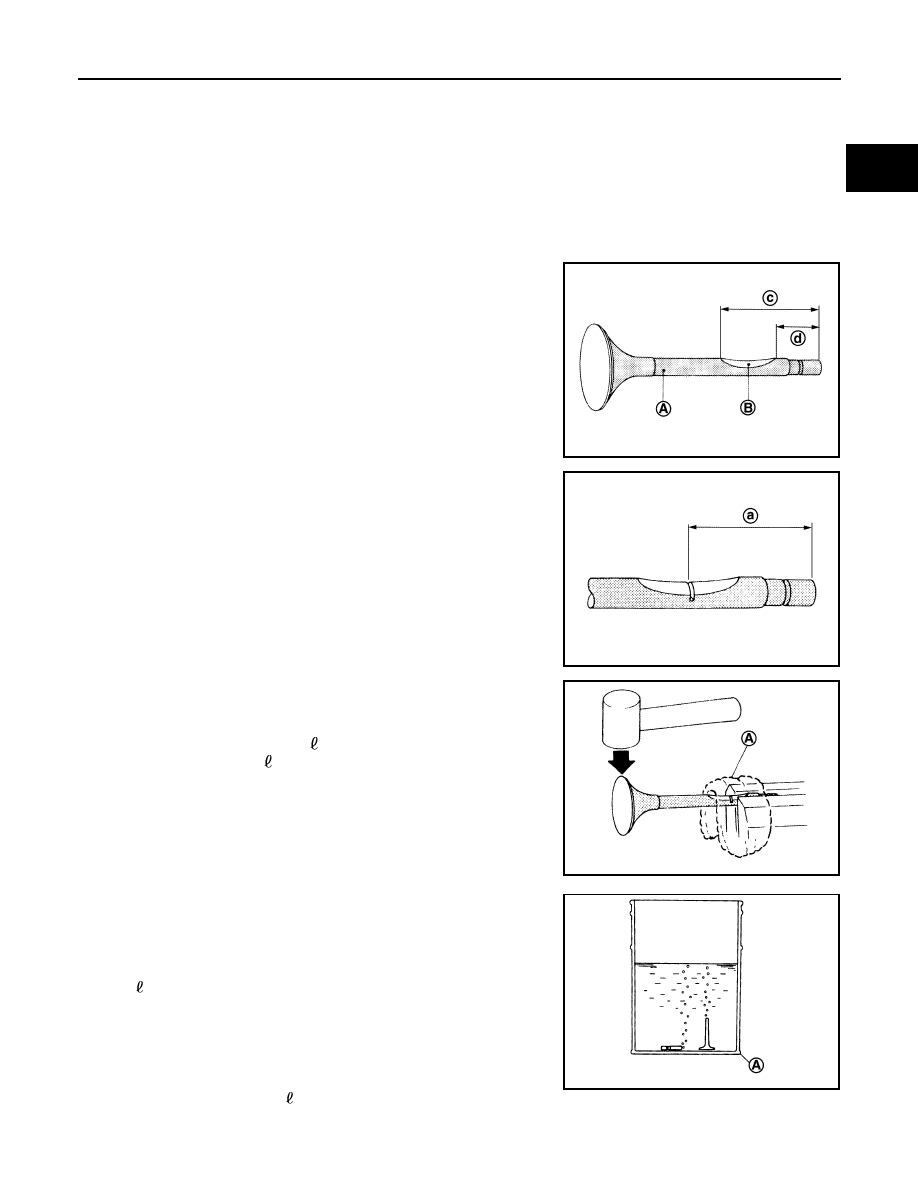Nissan Rogue. Manual - part 560

PRECAUTIONS
EM-5
< PRECAUTION >
C
D
E
F
G
H
I
J
K
L
M
A
EM
N
P
O
CAUTION:
• Use approved shatter-resistant eye protection when performing this procedure.
• Perform this and all subsequent disposal work procedures in an open room, away from flammable
liquids. Keep a fire extinguisher, rated at least 10 ABC, in close proximity to the work area.
• Be sure to wear rubber gloves when performing the following operations.
• Make sure the resultant (high alkalinity) waste water does not contact your skin. If the waste water
does contact you, wash the contacted area immediately with large quantities of water.
• Dealers should check their respective state and local regulations concerning any chemical treatment
or waste water discharge permits which may be required to dispose of the resultant (high alkalinity)
waste water.
1. Clamp valve stem in a vice.
2. The valve has a specially-hardened surface. To cut through it,
first remove a half-round section, approximately 30 mm (1.18 in)
long using air-powered grinder until black color is removed and
silver color appears.
3. Use hacksaw to cut through approximately half the diameter of
valve stem. Make the serration at a point 40 mm (1.57 in) from
the end of valve stem.
4. Cover the serrated end of the valve with a large shop towel (A).
Strike the valve face end with a hammer, separating it into two
pieces.
5. Fill a bucket, such as a 20 (5-1/4 US gal, 4-3/8 Imp gal) oil
can, with at least 10 (2-5/8 US gal, 2-1/4 lmp gal) of water.
Carefully place the already cut (serrated) valves into the water
one-at-a-time using a set of large tweezers and quickly move
away at least 2.7 m (9 ft).
6. The valves should be placed in a standing position as shown in
the illustration to allow complete reaction. After the bubbling
action has subsided, additional valves can be placed into the
bucket allowing each subsequent chemical reaction to subside.
However, no more than 8 valves should be placed in the same
10 (2-5/8 US gal, 2-1/4 lmp gal) amount of water. The com-
plete chemical reaction may take as long as 4 to 5 hours.
Remove the valves using a set of large tweezers after the chem-
ical reaction has stopped. Afterwards, valves can be disposed
as ordinary scrap.
(A)
: Black color
(B)
: Silver color
(c)
: 47 mm (1.85 in)
(d)
: 17 mm (0.67 in)
JPBIA4964ZZ
(a)
: 40 mm (1.57 in)
JPBIA4965ZZ
JPBIA4966ZZ
A
: Bucket [Such as 20 (5-1/4 US gal, 4-3/8 Imp gal) oil can]
JPBIA4967ZZ